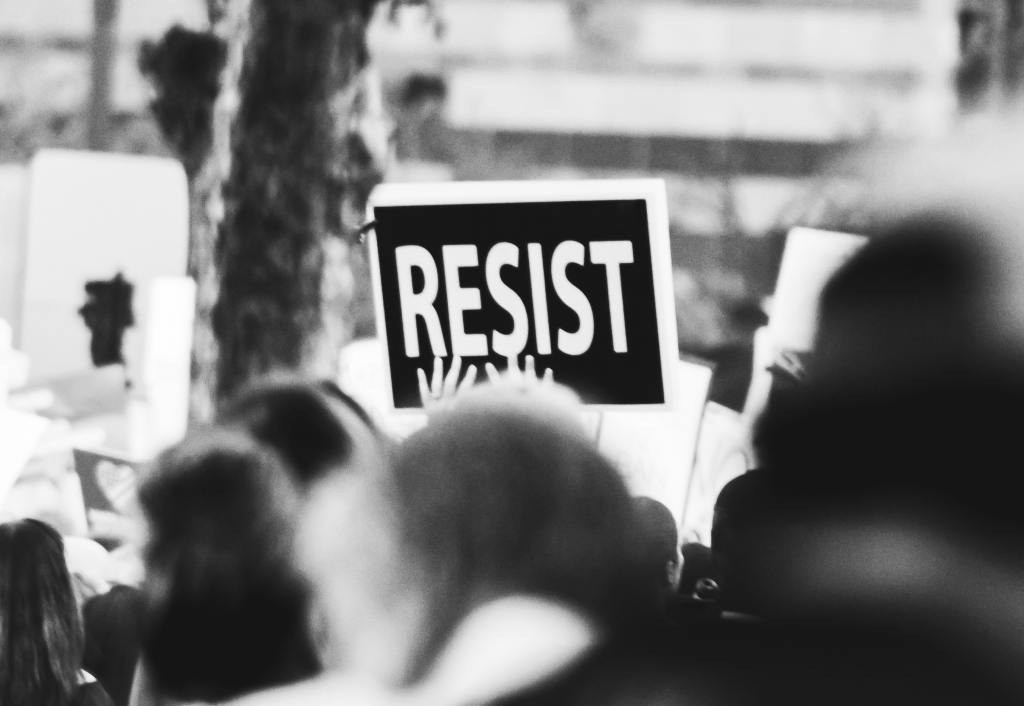
INTRODUCTION:
Three farm laws namely Farmers’ Produce Trade and Commerce(Promotion and Facilitation) act, Essential Commodities (Amendment) Act and Farmers(Empowerment and Protection) Agreement on Price Assurance and Farm Services Act collectively known as Farmers Act of 2020 were framed by the Parliament of India which are passed from Lok Sabha and Rajya Sabha on 17th September 2020 and 20 September 2020 respectively with the assent from the President of India on 27th September 2020[1].
In the minds of farmers, it also became a fear that these acts will systematically end the MSP among other concerns. This situation ensured the protests from the farmers which initially started in the states of Haryana and Punjab but soon reached to the borders of National Capital, Delhi. [2] The concern of this article is however, not to get into the farm laws but to deal with another important aspect of the protest; the tussle between right to protest and right to movement.
There were three categories of petitions filed before the Hon’ble apex court[3] regarding the farm laws and farmers protest, out of which one was filed by the residents of neighboring regions of the protest site as for the inconvenience caused to them hampering their fundamental right to move freely throughout the territories of India and also the right to carry business and trade. Although, the court did not ordered regarding the issue, this sparkled the controversy again which gained highlight earlier in 2020 during the Shaheen Bagh protests against the Citizenship Amendment Act,2020(CAA).
CONSITUTIONAL PROVISIONS: WHAT DOES THE HOLY BOOK SAYS
RIGHT TO PROTEST-
The foundation of independent India itself lies on the protests during the freedom struggle, thus making protests an indispensible part of Indian culture and its rich history. Protest in the legal sense can be defined as ” formal declaration whereby a personal objection or a disapproval of an act is made”[4] The right to protest is a fundamental right enshrined under the Article 19(1)(a) and Article 19(1)(b) and Article 19(1)(c) of the Indian Constitution. It says that;
ARTICLE 19[5]– Protection of certain rights regarding freedom of speech etc.
(1) All citizens shall have the right
(a) to freedom of speech and expression;
(b) to assemble peaceably and without arms
(c) to form associations or unions;
Although, there is no explicit mention of the word ‘protest’, these three articles together provides the right to protest on account of which every citizen has right to hold peaceful protest against any issue not in social or national interest . The fundamental right to peaceful protest has been guaranteed by the apex court from time to time. A well known authority in this regard is the Ramlila Maidan Incident v. Home Secretary, Union of India and Ors.[6], in which the Supreme court emphasized on the importance of right to protest in democracy. In the words of Justice B.S. Chauhan;
“Citizens have a fundamental right to assembly and peaceful protest that cannot be removed from arbitrary executive or legislative action”
However, as they say ‘along with rights come responsibilities.’ Therefore, certain requirements has to be followed in order to exercise the fundamental right to protest. The protests should not be destroy public property and should be in accordance with rule of law. There are certain restrictions made within the article 19(2), 19(3) and 19(4)[7] in exercising the right to protest which are;
- If there in danger on Security of the State,
- Threat to Integrity and sovereignty of India,
- Violation of Public order,
- When there is contempt of court,
- When there is a threat to friendly relation with foreign States.
RIGHT TO MOBILITY-
The right to mobility is provided in the Constitution under Article 19(1)(d)[8] which says;
All citizens shall have the right
(d) to move freely throughout the territory of India;
In the case of Kharak Singh v. State of U.P.[9], the Supreme Court observed that the right to move freely throughout the territory of India implies the right to locomotion which means the right to move whenever and however a person likes to.
However, in certain cases the two of the most important fundamental rights provided by the Constitution come at loggerheads. A peaceful protest at a public place is a fundamental right of the persons protesting but it can be violation of right to mobility of another who is caused inconvenience due to the blockage of that public place. One of the recent and a landmark judgment was in the issue of Shaheen Bagh Protests.
THE SHAHEEN BAGH JUDGEMENT: BALANCE BETWEEN DEMOCRACY AND DISSENT:
PROTESTS AT SHAHEEN BAGH
The enactment of the controversial Citizenship (Amendment) Act, 2019 led to widespread agitation and subsequent protests in different parts of the country. One of the strongest centre for the anti-CAA protests was Shaheen Bagh, which attracted crowds in large numbers which basic facilities being availed to them at the protest site. This accumulation of protesters led to blockage of nearly 1 kilometer of a six lane highway which unsurprisingly created a lot of inconvenience to the people residing at the place and also to the commuters using the route of protest site. [10]
Subsequently, a plea was filed in the Delhi High Court to order to shift the protest to another ‘authorised’ protest site, which was eventually dismissed by the high court. Later, a writ petition was also filed in the same court in which it ordered the authorities who were respondents in the instance to probe into the grievances posed by the petitioners and deal with them in conformity with the law and relevant government policies but did not issued a writ for handling the protest site vesting all powers in the hands of the respondent authorities. Despite the orders of High court, the protests continued and eventually the matter reached to the highest court.[11]
SUPREME COURT JUDGEMENT:SETTING UP OF A PRECEDENT-
“Democracy and dissent go hand in hand, but then the demonstrations expressing dissent have to be in designated places alone“- Excerpt from Supreme Court Judgment
Owing to the continuance of protests and ambiguity in the directions issued by Delhi High Court, a Special Leave Petition(SLP) was filed by Mr. Amit Sahni in the Supreme Court. Supreme Court finally pronounced its judgment in Amit Sahni v. Commissioner of Police and Ors.[12] on 7th October 2020.
The court observed that the protests in the colonial rule which was oppressive in nature cannot fit in a democratic society. The constitution with the provision of rights, has also provided with certain duties with the citizens are ought to perform;
“The erstwhile mode and manner of dissent against colonial rule cannot be equated with dissent in a self- ruled democracy”
A heavy reliance was placed on the case of Mazdoor Kisan Shakti Sangathan v. Union of India and Ors.[13] , thereby ruling that every fundamental right conferred to citizens by Constitution does not exist in isolation and a balance must be established with all the other contrasting rights. It ruled that though there is a fundamental right to protest against a legislation, public places cannot be occupied for unreasonable time in an irresponsible manner;
“While appreciating the existence of the right to peaceful protest against a legislation, we have to make it unequivocally clear that public ways and public spaces cannot be occupied in such a manner and that too indefinitely”
It was finally held by the court that occupying a public place for protests is not acceptable and it is the responsibility of the administration to prevent such obstructions and encroachments.
CRITICAL ANALYSIS AND CONCLUSION: THE BIGGER QUESTION OF DISSENT V. EFFECTIVE FUNCTIONING IN DEMOCRACY
The judgment was not only limited to establish balance between right to protest and right to mobility, but also dealt with the bigger issue of balancing of voice of dissent and effective functioning of a democracy. There has been also criticism of the judgment on different issues.
One of the criticism is the geography of Shaheen Bagh, located in Muslim-dominated community. It is evident that for a minority, in order to fight against the system and to make their voices to be heard at the top, it is a comfort for operating in their backyard. It was the duty of the court to find the importance of the site of protest and to recognize that the protest are not be based on government convenience. The public places should not just act as a common ground but as a place where the demand of the citizens can be heard and they feel safe and comfortable.
There has been acceptance by the International forums that the protests being carried out in public places are to be considered ‘legitimate’. It is observed by the European Court of Human Rights that the there should be a ‘tolerance’ to some extend in regards to the inconvenience caused to ordinary life due to protests.[14] Controlling the protests, especially in the case when it the only way to opt, can endanger the right to freedom of expression.
The right to freedom of expression forms the core of any democracy whose protection should be the priority of the state and judiciary being a part of state is also responsible in safeguarding the right. The protests will inevitably cause a certain level of inconvenience but the right to expression is indispensible to a democracy and should not be controlled. The restriction on it, as it appears in the instant case should not be imposed as protests should not be organized only where the people in power want them to be and restriction of use of public places for protests should be discouraged.
To conclude, the judgment is surely going to have significant impact on the future protests and the right to protest in the nation. This is going to set a precedent for the future and can have negative consequences leading to weakening of the basic structure of the home to largest democracy. However, its implications and ramifications will unfold with the time to come.
[1] Neelam Motwani, Timeline: From Approval of Farm Bills to the International Rage of Protest AlShorts (2021), https://www.alshorts.com/post/view/timeline-from-approval-of-farm-bills-to-the-international-rage-of-protest/ (last visited Apr 15, 2021).
[2] Ibid
[3] Rakesh Vaishnav and Ors. v. Union Of India and Ors., (2021) 1SCC590
[4] Protest, West’s Encyclopedia of American Law, https://legal-dictionary.thefreedictionary.com/protest(last visited Apr 15, 2021).
[5] INDIA CONST. art. 14
[6] Ramlila Maidan Incident v. Home Secretary, Union of India and Ors., (2012) 5SCC1
[7] Supra note 5
[8] Supra note 5
[9] Kharak Singh vs The State Of U. P. & Others, (1964) SCR(1) 332
[10] Business Standard, What is Shaheen Bagh Protest, Anti-CAA Protests, Location, News Business Standard, https://www.business-standard.com/about/what-is-shaheen-bagh-protest (last visited Apr 15, 2021).
[11] Sahil Aggarwal, Right to Protest v. Right to Mobility: The Shaheen Bagh Case Law and Other Things (2020), https://lawandotherthings.com/2020/10/right-to-protest-v-right-to-mobility-the-shaheen-bagh-case/ (last visited Apr 15, 2021).
[12] Amit Sahni v. Commissioner of Police and Ors., (2020)10SCC439
[13] Mazdoor Kisan Shakti Sangathan v. Union of India and Anr., (2018) 17SCC324
[14] V. Venkatesan, Supreme Court’s Shaheen Bagh Judgment Will Lead to Fresh Curbs on Right of Peaceful Protest The Wire (2020), https://thewire.in/law/supreme-court-shaheen-bagh-judgment-fresh-cubs-right-of-peaceful-protest (last visited Apr 15, 2021).
Author: Kanishk Joshi from Rajiv Gandhi National University of Law (RGNUL), Patiala.
